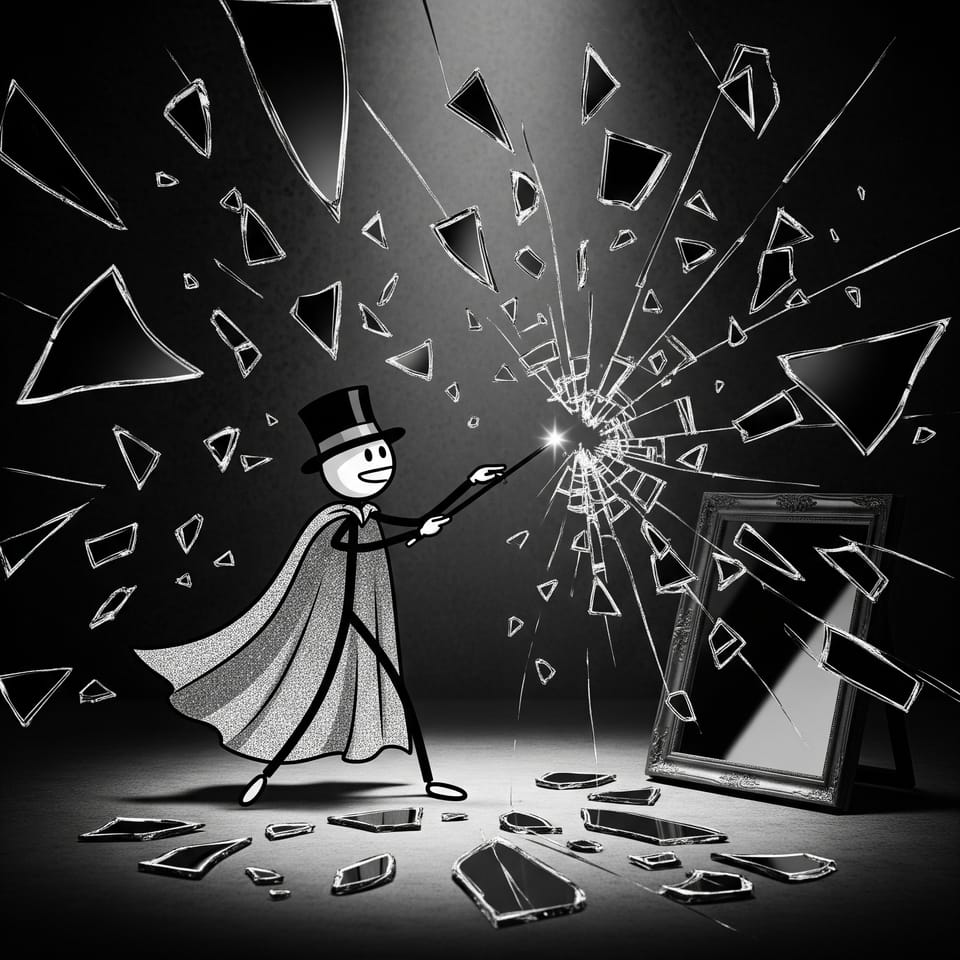Shattering Illusions

In the early 2000’s I saw the magician David Copperfield on tour. During an illusion, he had audience members come on stage, help wave a giant white cloth, and magically a car appeared underneath it. It was a very memorable illusion that showed how in magic, you only get to see a small part of what's actually happening (the rest is the secret). The same happens in life, though it rarely elicits the same sense of amazement or skepticism.
The Illusion of Understanding
Complex things often seem simple on the surface. If our interactions with those things is also relatively simple, we build incomplete ideas about how they work.
Think about your vehicle: you can drive yourself places, add gasoline, maybe change the oil or add air to a tire, but you don’t really understand all the components that make up the whole system.
Why Do We Form Illusions?
Unlike a magic trick, our illusion of understanding comes from a number of places. The most common come from the amount of attention or time we are willing to spend. We might lack the curiosity to know how our car works, so long as it gets us from point A to point B, we are fine. We might be curious about the magic trick until we leave the venue. It was entertaining but how much time should we really spend trying to figure out how it works?
Once we’re willing to spend some time and attention, there are other places our illusions can come from:
Flawed reasoning
Sometimes we misunderstand a system from the beginning. We might believe we've figured it out, but our initial assumptions are wrong. For example, we know that adding oil prevents a car's engine from burning up, but we might not understand the specific parts that need lubrication or why they get hot in the first place. This is where our reasoning goes sideways without us knowing it.
Too simplistic of a model
People often create simple mental models to understand complex systems. This is great for starting to learn a concept but if you stop there, it creates an illusion of understanding. How many people think they understand our economic system but can’t explain how interest rate changes affect things?
Don’t align with a narrative or story we have
Who doesn’t love a good story? The stories we learn or we tell ourselves can create a nice explanation for why something is, even when it’s not true. We might work for a company that tells us how we’re really important to them. Until the day they let us go. Relying on data to help us supplement or refute the narrative we have can be beneficial such as “30% of the time, even when a car goes for regular maintenance it has other issues that need to be debugged and addressed”.
Are outside of cultural norms
The way our society and/or our communities set expectations or think about things can become deeply ingrained and hard to challenge. If I belong to a group who always hypes new technology, what happens when I don’t agree with the new hype? Or in the case of the vehicle, what if women don’t typically work on cars? This might increase the likelihood of women building certain illusions about how they work.
Cognitive biases
Cognitive biases are systematic errors in the way we think about and perceive things. They reinforce the illusions we already have:
- Confirmation bias: the tendency to search for, interpret, and favor information that confirms one's pre-existing beliefs.
- Dunning-Kruger effect: the tendency of people with low ability at a task overestimate their ability. Also the inverse, the tendency of high-ability individuals underestimate their relative competence.
- Availability heuristic: the tendency to overestimate the likelihood of events that are more easily recalled from memory.
Shattering Illusions
That’s why title of this blog became “Shattered Illusions”. Aside from establishing a unique publishing name, I want to unravel the illusions around me, both technical and not. To shatter something means you break it into pieces (while destroying it). Shattering an illusion means a breaking of the proverbial glass into pieces of understanding. It implies that illusions are fragile to begin with.
To this day, I don’t know how David Copperfield got the car on stage and I’m ok with not knowing. But there are lots of other topics I want to know more about, and that's what you'll read here.

Member discussion